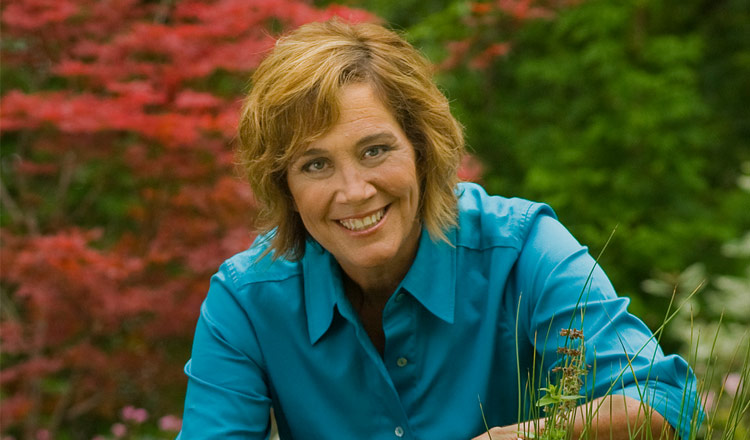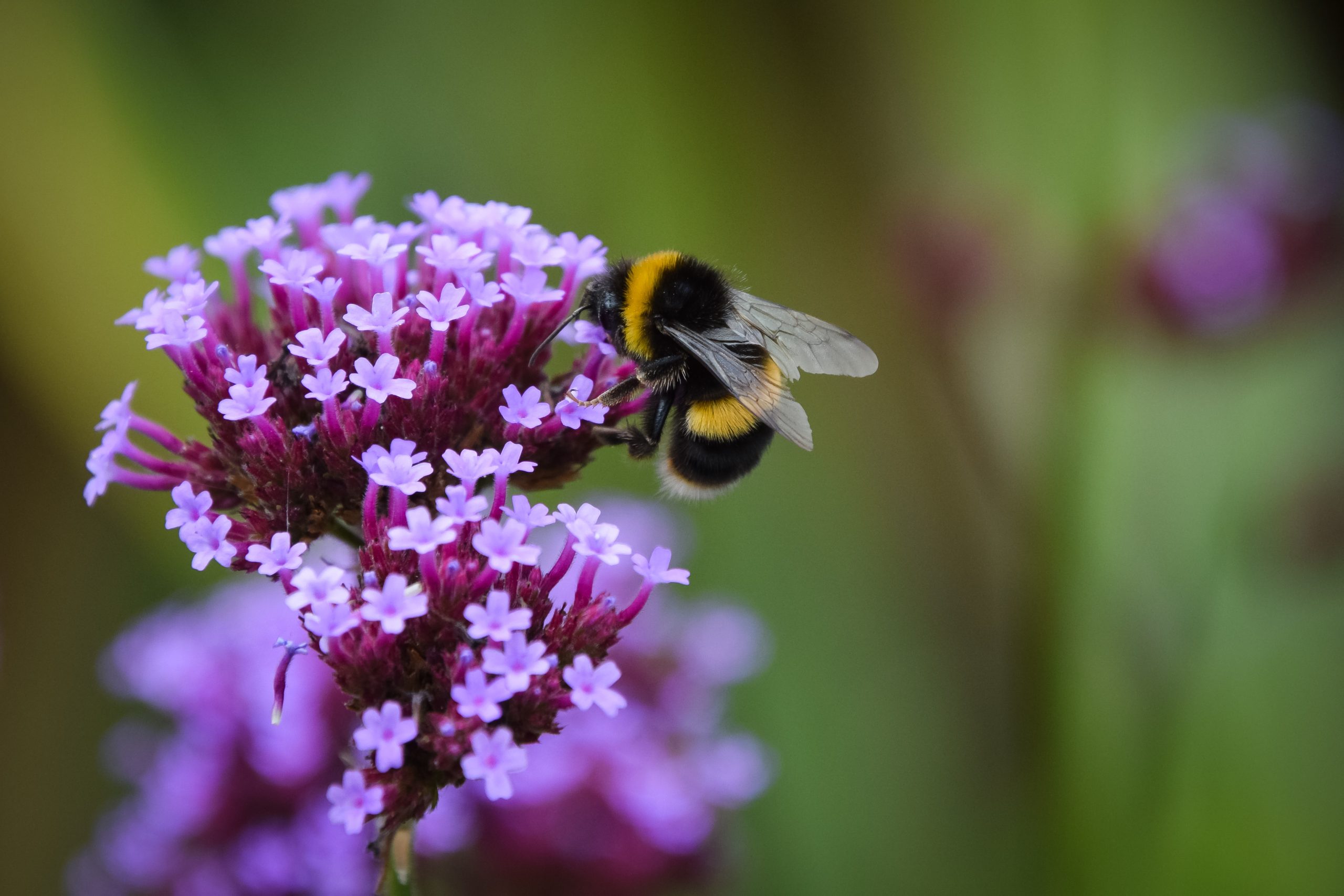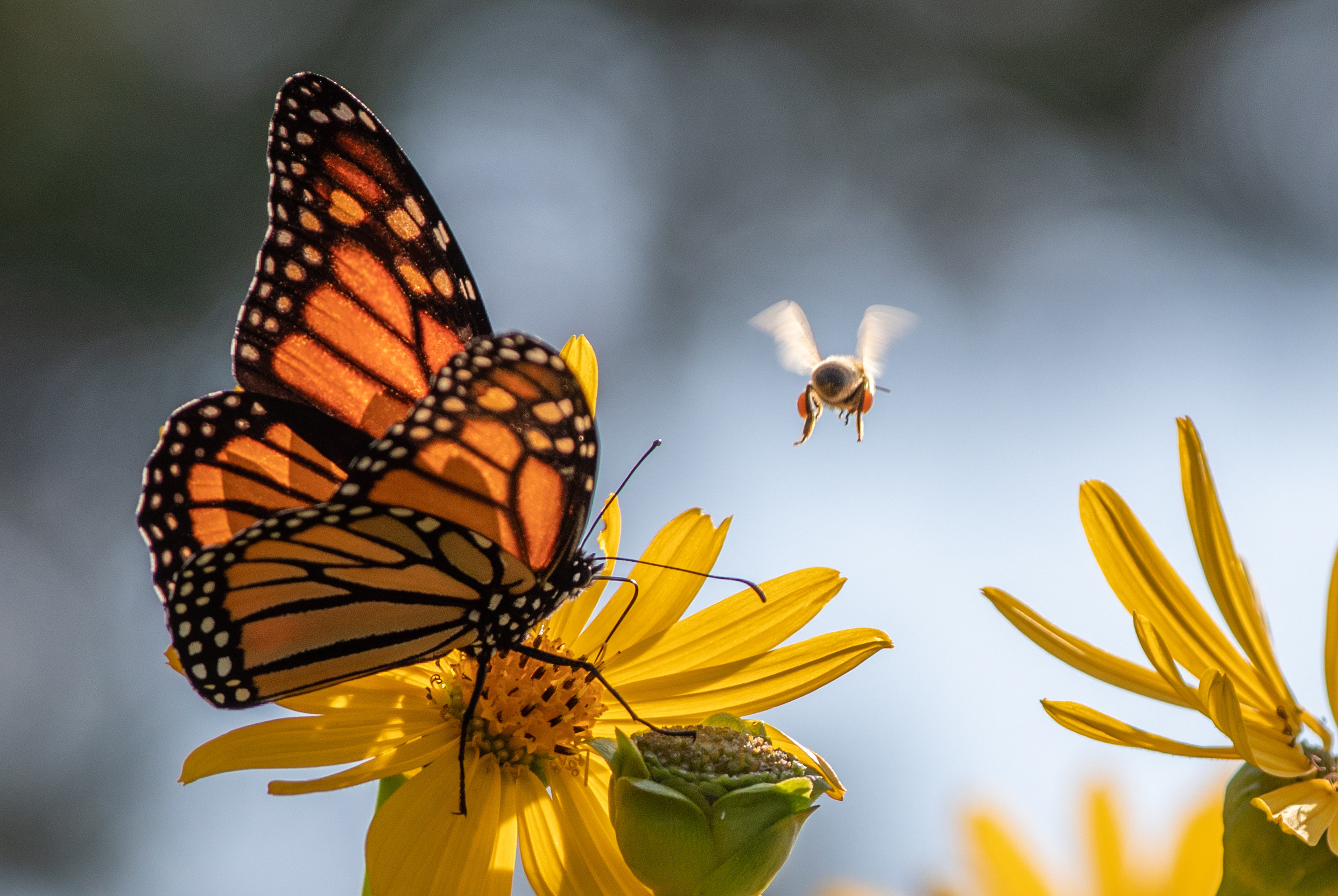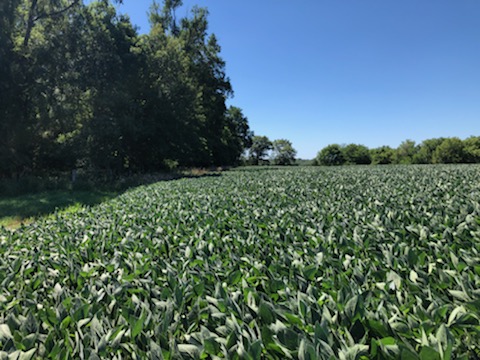Create a Pollinator Paradise

By Melinda Myers – horticulturist and gardening expert
Whether planting a garden, enjoying the beauty of your landscape, or sitting down to a delicious meal, you have bees, butterflies, and other pollinators to thank. These essential members of our community are responsible for much of the food and beauty we enjoy each day.
Unfortunately, pesticides and habitat loss are threatening their existence. But there is something you can do to help. Turn your garden, backyard, or balcony into a pollinator’s habitat.
Just like people these living organisms need food, water, and shelter to survive and a place to rear their offspring. Provide some or better yet all of these resources and you will not only help the pollinators but you’ll grow healthier and more productive gardens.

How to Grow a Pollinator Garden
Healthy soil is the key to a healthy garden and one that best supports pollinators. Adding compost to the soil increases its ability to absorb and hold water. It feeds soil organisms and microbes that improve the soil and in turn, feed our plants. You’ll increase your growing success and reduce the impact of insect, disease, and environmental stresses on your plants.
Spread an inch or two of compost over the soil surface of existing gardens. Worms, ground beetles, and other soil dwellers will help move it into the soil near the plant roots. You may opt to build healthy soil using the lasagna and Hugelkutur methods that use landscape trimmings and compost.
Maximize the pollinator appeal by creating a landscape with multiple layers of plants to attract and support a variety of insects. Include trees, shrubs, and perennials of all sizes and flowers of all shapes and colors.
Plant in mass for the greatest impact. Pollinators will expend less energy flying from one flower to the next when gathering pollen and nectar. Designing a landscape and garden beds that provide continuous cover also helps protect pollinators from predators.
Don’t let a lack of space stop you from gardening for pollinators. Even a window box or a couple of containers on the balcony, patio, or deck can help.
Include a flat (warming) stone where pollinators can stop, spread their wings, and warm up. You’ll enjoy the opportunity to observe and photograph the winged visitors who stop by.
Best Plants
Select a variety of plants so you have something blooming throughout the growing season. Include flowers of various shapes and colors to attract a diverse group of insects and hummingbirds. Single flowers are best as they contain more pollen and nectar and a landing pad for visiting insects. Add some fragrant night bloomers that moths and bats will appreciate.
Include trees, shrubs, and flowers that serve as host plants for caterpillars and the immature stages of other insects. Milkweed is the well-known host for monarch caterpillars and many of our herbs like dill, fennel, and parsley support swallowtails. When you plant a diversity of plants you can easily overlook the temporary leaf damage they cause.
Always select plants suited to the growing conditions. Your plants will be healthier, require less maintenance, and will flower more profusely for the pollinators.
Use native plants whenever possible. These evolved with our native insects and wildlife providing the greatest appeal and benefits for them. As always make sure the native plants you select are suited to the climate, soil, sunlight, and rainfall and will fit the space as they grow and mature.
The Xerces Society has a list of native plants that support pollinators https://xerces.org/pollinator-conservation/pollinator-friendly-plant-lists
Just enter the name of your state and find some of the pollinator-friendly native plants suited to your area.
Cultivated flowers will also help our pollinators. Annuals like zinnias, sweet alyssum, cosmos, sunflowers, and pentas; perennials like sedum, salvia, and ornamental grasses; as well as herbs help attract bees, butterflies, and birds to the garden. Use spring flowering bulbs and perennials to support early-season visitors. Plant asters, goldenrods, and other fall bloomers to provide needed food for migration or hibernation.
Protect Plants from Hungry Critters
Keep your garden filled with colorful flowers to attract and support pollinators. Use organic Plantskydd Animal Repellent to protect them from herbivores such as deer, elk, moose, rabbits, squirrels, chipmunks, and voles. This repellent uses odor to repel animals before they take a bite out of your plants and won’t harm animals or pollinators. It is rain resistant so you will need to apply it less often. Read and follow label directions to achieve the best control.

Water
Birdbaths, fountains, ponds, and other water features provide sound and beauty for us to enjoy and water for our pollinator friends. Select bird baths with sloping sides no more than ½ to 1” (1.3 to 2.5cm) and no deeper than 2” (5cm) that provide insects and birds easy access to the water. Add a few stones or branches for them to rest upon while taking a drink.
Set your bird bath in the shade, if possible, to keep it fresh longer. Keep it filled and change the water every few days so the birds have a fresh supply of water and mosquitoes are not a problem. Consider filling your birdbaths every time you water your container gardens. It is easier to remember to do this when you make it part of your daily routine.
Even a puddle or damp sponge provides a welcome oasis. Create your own puddle by filling a bucket or shallow container with moist sand. Add water often enough to keep the sand consistently moist. Add a pinch of sea salt or wood ashes for added nutrients. You’ll find bees and butterflies gathering at these damp spots for a drink.
Shelter
Leave perennials standing in the garden for winter. Many pollinators and other beneficial insects overwinter in the stems of these plants. Wait for temperatures to consistently hover in the 50°’s F (10° C) in spring before cutting them back. This gives insects overwintering in the stems time to exit and find a summer home.
Leave some of the stems standing throughout the growing season. Cut these remaining stems back to 18 to 24” (46 to 61cm) above the ground for native bees to use as summer homes. New growth will mask the dead stems and the old stems will eventually decompose adding nutrients and organic matter to the soil.
If you can’t wait to cut back your perennials in spring, just cut those to be removed and stack them out of sight. Compost or shred and use these stems as mulch later in the summer.
Trees and shrubs also provide pollinators with needed shelter from the weather and predators. Many of these provide space for laying eggs and rearing young. Provide a variety of trees, shrubs, and perennials to create layers of cover to accommodate the various pollinator’s needs.
Leave leaf litter and dead plants for the bees and other pollinators. Many insects live in or under the leaf litter and others like bumblebee queens that overwinter underground benefit from the added insulation these provide.
Dead trees and branches also provide homes for some pollinators, birds, and other wildlife. Just make sure those left in place do not create a hazard for people and property.
Preserve a few out-of-the-way bare patches of soil for ground-nesting bees. A well-drained south-facing slope makes a great place for these bees and may keep them from nesting in garden beds near your front door.
Tending a Pollinator Garden
Once your garden is planted keeping the plants healthy and pollinators safe is your next task. Avoid using pesticides in the landscape. The chemicals used to kill problem insects, diseases and weeds can also harm the good guys you are trying to attract and support.
Starting with the right plant for the growing conditions is the easiest way to reduce pest problems and the need for pesticides. Properly placed plants will be healthier and less susceptible to damage. This also means less work for you.
Keep your plants healthy with proper care. Water new plantings often enough to keep the roots and surrounding soil moist but not wet. Gradually extend the time between watering as the plants become more established.
Most plants benefit from an inch of water per week depending on the type and age of the plant, temperature, and sunlight. Always water thoroughly and only when needed. Deep less frequent watering of established plants develops a robust root system better able to access water. This makes plants more drought-tolerant and less susceptible to pest problems. Avoid overwatering which can lead to disease and frequent shallow watering that creates shallow roots subject to drought stress.
Mulch the soil with leaves, evergreen needles, or other organic matter. You’ll suppress weeds, conserve moisture, keep roots cooler in summer, and support pollinators.
Have your soil tested before fertilizing your plants. The results will tell you what if any fertilizer is needed. Applying compost or organic fertilizers will help improve the soil while feeding your plants. Low nitrogen slow-release fertilizers won’t interfere with flowering important to the health and well-being of our pollinators.
And when problems arise, tolerate damage whenever possible. Many plant problems are cosmetic or annoying but not harmful to the health and longevity of the plant. Small populations of insect pests help attract songbirds and predatory insects that manage the problem for us.
Use an eco-friendly pest management strategy when you feel control is needed. Sanitation, barriers, strong blasts of water, and hand-picking can target pests and minimize the damage.
Once you reduce or better yet eliminate pesticides from your landscape you will find more birds, lacewings, lady beetles, and other predatory and parasitic insects visiting your garden to manage problem pests.
Spread the Word
Let friends and neighbors know about the changes you have made. Inspire them to do the same. Working with neighbors and others in your community will help maximize everyone’s efforts by creating more food and habitat to support our pollinators.





